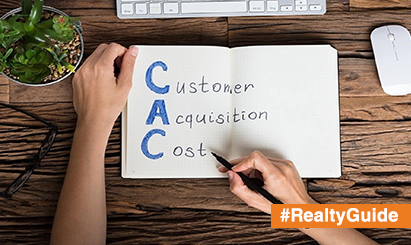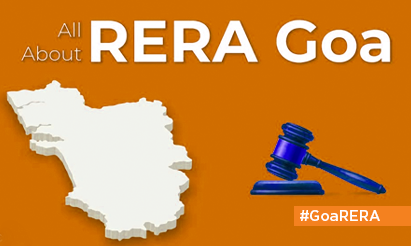What is Conveyance Deed? Meaning, Types, Purpose, and Difference from Sales Deed
A conveyance deed is a legal document in which the seller transfers property ownership to the buyer. It comprises information such as the property description, the individuals involved, and the terms of the transfer. The significance of a conveyance deed varies based on the type, which might be gift, lease, or mortgage. Unlike a sales deed, it can cover more types of property transfers than only sales transactions, assuring legal title to the property.
What is a Conveyance Deed?
A conveyance deed is a document in which one party transfers ownership of an asset to another. It permits the transfer of real estate, automobiles, and other assets with exclusive rights or restricted licenses.
This deed seeks to ensure that the property passes directly from the seller (grantor) to the buyer (grantee), with no intermediaries such as mortgage firms or trustees engaged in the transaction. It allows both parties to avoid paying unneeded expenses for these services. Conveyance deeds are commonly utilized when a person wants to sell their house or property and have it transferred straight from them to another person’s name.
Types of conveyance deeds
Conveyance deeds take numerous formats based on the type of property transfer. Each kind serves a distinct purpose, depending on the nature of the transaction. The following are the main types of conveyance deeds:
- A sale deed transfers ownership from the seller to the buyer following the sale transaction, assuring clear title.
- A gift deed transfers property ownership without monetary transaction.
- A lease deed grants the right to use a property for a set length of time without transferring ownership.
- A mortgage deed pledges property as collateral for a loan, so giving security to the lender.
- An exchange deed facilitates the transfer of ownership between persons trading goods of equivalent value.

Importance of conveyance deed
What is a Conveyance Deed? A conveyance deed, also known as a sale deed, is a legal instrument that facilitates the transfer of ownership rights from the seller (transferor) to the buyer (transferee) for a property. It is one of the essential documents in the property registration process and serves as conclusive proof of ownership. The conveyance deed ensures a lawful transfer of immovable property and protects the rights and interests of both parties involved in the transaction.
Proof of Ownership: The conveyance document serves as evidence of the buyer’s legitimate ownership of the property. It gives legal protection against future disputes or demands about ownership rights.
Transfer of Title: The deed documents the legal transfer of title from the seller to the buyer. It ensures that the property is free of encumbrances and grants the buyer exclusive rights and ownership.
Property valuation: The conveyance document comprises information about the property’s description, measurements, borders, and other pertinent information. This paperwork aids in establishing the property’s worth for future reference, such as when reselling or obtaining financing.
Legal Validity: When correctly executed, a conveyance deed is legally valid and enforceable in court. It guarantees that the transaction follows the legal framework and provides security to both parties involved
Benefits of conveyance deed Registration
The Registration Act of 1908 makes it essential to record conveyance deeds. Unregistered conveyance deeds are not admissible as evidence in court and have no legal validity. Some advantages of registering the transfer document are:
- Provides legal integrity and validity to the act.
- Acts as proof of the transfer of property title.
- Protects the new owner’s rights from lawsuits by third parties.
- Required for future property sales.
- Essential for mutation in the land revenue records.
Documents Required for Conveyance deed
A conveyance deed can be used to transfer any real estate, such as land, buildings, and residences. It includes information on the buyer and seller, the price they paid for the property, a description of the property being transferred, signatures from both parties, and occasionally extra data such as mortgage agreements or leases on the property.
The standards for these papers vary by state, however they often include the following.
- Card of property
- A comprehensive list of owners, including the name(s) and phone numbers of each owner or seller participating in the transaction.
- A transfer deed draft with a receipt for the payment of stamp duty.
- Documents including certifications of occupancy, initiation, and fulfillment.
- A description of the location plan, survey, and all parties with rights regarding the aforementioned deed (such as mortgage holders).
Process of obtaining a conveyance deed
Drafted on non-judicial stamp paper of the required value, a transfer deed is registered at the closest sub-registrar office. Stamp duty, registration fees, and post-registration costs are the buyer’s responsibility. The stamp duty and registration fees vary from state to state.
A conveyance deed can be obtained by following the easy procedures listed below.
Title Verification: In order to determine if the seller is legally permitted to sell the subject property, it is imperative that title to the property be verified. One can choose from a number of online title verification service providers to complete the process.
Sale Agreement: The sale agreement serves as the conveyance deed’s foundational instrument. A sale agreement including all the terms and conditions of the property transaction must be created when the property’s ownership and title have been confirmed.
Property Registration Charges & Stamp Duty: The next step is the stamp duty and property registration charges payment. The corresponding proportion varies throughout India’s states. It is a levy imposed by the government on transactions involving real estate.
Conveyance Deed Execution: The conveyance deed is issued following the signature of both parties in front of two witnesses, payment of the stamp duty and property registration fees, and other requirements. Always double-check the format and information provided.
Registration of Conveyance Deed: Within four months of its execution, the conveyance deed must be registered with the Sub Registrar’s office. The conveyance deed must also have a few necessary papers attached.
Key Sections to include in the conveyance deed
Essential information must be included in a conveyance document to guarantee the property transfer’s validity and clarity. The following sections are essential to include:
Parties Involved: Buyer and seller names and contact information.
Property Description: A thorough explanation of the property’s dimensions, location, and limits.
Ownership Transfer: a clause outlining how ownership rights are transferred from the seller to the buyer.
Amount of Consideration: The entire transfer price that was agreed upon. The indemnity clause guarantees that the property is free of liens and other legal issues.
Terms of Payment: information about the timing and mode of payment.
Witnesses and Signatures: both parties’ signatures and witness information to certify the deed.
Conveyance deed vs. Sale deed
Although they are both used in property transactions, conveyance and sale deeds have different functions. A conveyance deed includes a wider range of property transfers, such as gift, lease, or mortgage, however a sale deed is a particular kind of conveyance document used for property sales.
Principal Disparities:
Scope: A conveyance deed covers all kinds of property transfers, such as sales, leases, and gifts, whereas a sale deed is only used for the purchase and sale of real estate.
Goal: While a conveyance document guarantees the appropriate transfer of property title, a sale deed completes the sale and purchase agreement.
Content: While sale deeds mostly concentrate on the conditions of sale and payment, conveyance deeds can contain a variety of terms for different transfers.
Conveyance Deed vs Registry
A conveyance deed is a formal legal document that outlines the terms and circumstances and formalizes the transfer of property ownership from one party to another. However, the official documentation of this transfer with the government authorities, known as the property registration, gives the transaction legal recognition.
Principal Disparities:
Goal: While the register formally documents the transfer, a conveyance deed specifies the conditions of the transfer.
Requirement: A conveyance deed is required for a valid transfer agreement, but a registration is required for legal ownership.
Conclusion
For real estate transactions, it is essential to comprehend the differences between a conveyance document and property registration. The conveyance deed describes the conditions under which ownership is transferred, but it is officially recorded with government authorities by the registry. Both are necessary to provide legitimate ownership, unambiguous property titles, and protection against potential conflicts.
FAQs
What is conveyance deed Meaning?
A conveyance deed is a legal document that formalizes the transfer of property ownership from one party to another, detailing all terms, conditions, and rights involved in the transaction.
What if a conveyance deed is not registered?
If a conveyance deed is not registered, the transfer is not legally valid, and the buyer cannot claim ownership rights, which may lead to future legal complications.
Is conveyance deed and lease deed same?
No, a conveyance deed permanently transfers property ownership, while a lease deed grants temporary rights to use the property for a specific period.
What is the difference between possession letter and conveyance deed?
A possession letter confirms that the buyer has physical possession of the property, while a conveyance deed legally transfers ownership rights to the buyer.
Who executes the deed of conveyance?
The seller or the transferor executes the deed of conveyance to transfer property ownership to the buyer or transferee.
Can a conveyance deed be challenged in court?
Yes, a conveyance deed can be challenged in court if there is evidence of fraud, misrepresentation, or legal deficiencies during its execution.
What is the purpose of a conveyance deed?
The purpose of a conveyance deed is to legally transfer property ownership, outline the rights and obligations of both parties, and ensure a clear title.
What is the time period for conveyance deed?
The time period for registering a conveyance deed varies by jurisdiction, but it is generally recommended to register it within 4 months of execution.
Can a conveyance deed be cancelled?
Yes, a conveyance deed can be cancelled through mutual consent or by court order if legal grounds such as fraud, coercion, or mutual mistake are proven.
Disclaimer: The views expressed above are for informational purposes only based on industry reports and related news stories. PropertyPistol does not guarantee the accuracy, completeness, or reliability of the information and shall not be held responsible for any action taken based on the published information.




